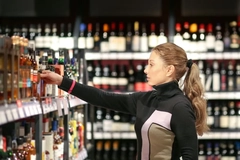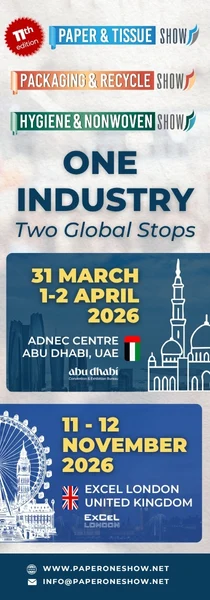Reinventing fashion packaging: Tech-driven circular solutions to boost e-commerce sustainability

The fashion packaging industry faces increasing scrutiny over its environmental impact. The rise of e-commerce has led to waste from returns and shipping, pushing fashion brands to rethink how their products are packaged and delivered.
As technology evolves, sustainable solutions for packaging are becoming more achievable. Packaging Insights looks into the decarbonization of the fashion industry with Tipa, Modepack, and Movopack, exploring distinct approaches to a shared goal of eliminating packaging waste.
Daphna Nissenbaum, CEO and founder at Tipa, tells us: “The fashion industry is one of the top industries primed to reconcile its wasteful packaging footprint and take charge in adapting to more eco-friendly and circular packaging strategies as part of broader sustainability goals.”
 Daphna Nissenbaum, CEO and founder at Tipa.“E-commerce has completely reshaped the packaging landscape. Items are being shipped individually rather than in bulk, increasing the volume of packaging waste.”
Daphna Nissenbaum, CEO and founder at Tipa.“E-commerce has completely reshaped the packaging landscape. Items are being shipped individually rather than in bulk, increasing the volume of packaging waste.”
“Packaging is no longer an afterthought, it is an extension of the brand’s values. As such, we’re seeing more interest in circular solutions, including compostable packaging that still offers the look, feel, and functionality of conventional plastic.”
Material innovation
Jure Širić, managing director at packaging company Modepack, highlights that the company is designing packaging with e-commerce in mind. The majority of its products, aside from a few variants of mailer boxes, feature integrated return seals.
“It means that if the consumer is not satisfied with the product, no additional packaging or subsequent packaging waste is being generated,” he explains.
“We offer a wide variety of sizes that cater to the needs of fashion retailers, aiming to minimize empty space in packaging while providing a reliable and durable solution that keeps products in pristine condition throughout the delivery process, thereby reducing the return rate.”
In collaboration with Lignin Industries, Modepack integrated Lignin Industries’ Renol, a lignin-based biopolymer, into its mailer bag production to boost sustainability.
“Renol and our recycled post-consumer plastic are already fully recyclable in the current waste management system, so that part of the equation was relatively straightforward.”
For Modepack, one challenge was achieving the right balance of Renol and its recycled post-consumer content.  Jure Širić, managing director at Modepack.
Jure Širić, managing director at Modepack.
“We wanted to offer a product that reduces CO2 emissions compared to products made from virgin plastic and retains all the features that customers rely on from traditional plastic packaging solutions. After testing numerous recipes with Lignin Industries, we found that adding 25% Renol to our mix achieves the same material properties as our Recycled Poly Mailing Bag, a tear-proof, moisture-resistant, and lightweight product,” says Širić.
Compostable alternatives
Tipa’s Nissenbaum points out that compostable solutions can reduce the hidden environmental toll of reverse logistics in the fashion industry.
“Reverse logistics is a growing area of focus, especially as brands adopt take-back programs and returns become more common. Compostable packaging plays a key role by offering an end-of-life solution that doesn’t depend on perfect recycling infrastructure.”
“If a garment is returned in its original compostable packaging, that material can be diverted from landfill and returned to nature instead. We see an opportunity for brands to educate consumers about composting and collaborate with local composting services to close the loop.”
However, Nissenbaum notes that to meet the speed and scale of fashion, packaging has to be easy to adopt and affordable. “The transition often comes with concerns around performance, aesthetics, and cost. Fashion brands want some sort of assurance that compostable packaging will hold up in transit, as well as look premium.”
 Tomaso Torriani, CEO and co-founder at Movopack.She stresses that offering compostable materials that are compatible with existing packing lines — and meet the same standards for durability, labeling, and customization as conventional plastics — makes businesses more willing to adopt sustainable alternatives.
Tomaso Torriani, CEO and co-founder at Movopack.She stresses that offering compostable materials that are compatible with existing packing lines — and meet the same standards for durability, labeling, and customization as conventional plastics — makes businesses more willing to adopt sustainable alternatives.
Reuse revolution
While Tipa and Modepack replace plastic with environmentally sustainable materials, Movopack promotes reusable packaging in the fashion industry.
“Fashion e-commerce has distinct demands — high return rates, varied order sizes, and the need for a refined, branded customer experience. Movopack is purpose-built to address these needs while enabling a shift toward more circular, climate-positive logistics,” says Tomaso Torriani, CEO and co-founder at Movopack.
Movopack’s reusable packaging comes in multiple formats and sizes to accommodate items from delicate garments to larger fashion pieces. It’s said to be lightweight, water-resistant, and durable enough for at least 20 cycles, making it possible for outgoing and return shipments.
Torriani highlights that the packaging design is fully customizable. “Brands can tailor the look and feel — from color and material finish to printed messaging and co-branding, ensuring a premium unboxing experience that reinforces their identity and sustainability values.”
In addition, he says that one of the main challenges for Movopack has been changing habits, both at the consumer and business level.
“For consumers, single-use packaging is often seen as the default, so we’ve had to make the reusable experience just as convenient, if not more so. We addressed this by designing a packaging return process that’s as simple as dropping it into any postbox, without needing a label or going to a specific location.” The reusable packaging can create a delightful unboxing experience for shoppers that strengthens brand loyalty (Image credit: Movopack).
The reusable packaging can create a delightful unboxing experience for shoppers that strengthens brand loyalty (Image credit: Movopack).
A circular future
Torriani predicts that fashion packaging will evolve into a sustainability asset for brands.
“In our case, packaging becomes a strategic tool: a way to engage directly with the end customer, enhance the unboxing experience, and build a stronger relationship with the consumer. It becomes a cross-functional product that involves multiple departments within a company. This naturally increases the complexity of coordination, compared to when packaging was handled solely by logistics.”
Last year, Movopack raised £2 million (US$2.5 million) in a seed funding round for cutting e-commerce packaging waste in the UK.
“We’re working closely with UK-based online retailers to embed reusable packaging directly into their logistics and customer journey. This starts with integrating Movopack into the checkout flow — either as an opt-in sustainability option or as the default packaging choice,” Torriani adds.
“To make the system scalable and frictionless, we’ve partnered with Royal Mail, enabling consumers to return their empty Movopack via any postbox across the UK, without labels or trips to drop-off points. This level of convenience is key to driving adoption and keeping return rates high.”
He says that over the next three to five years, fashion packaging will be expected to be circular by design.
“We anticipate a strong shift toward reusable and multi-purpose solutions, driven by both regulation and consumer demand. Brands that take action early will not only reduce their environmental footprint but also gain a competitive edge by aligning with Gen Z and millennial values,” Torriani concludes.












